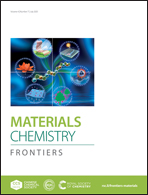Boosting the piezocatalytic performance of Bi2WO6 nanosheets towards the degradation of organic pollutants
Abstract
A novel piezocatalyst, Bi2WO6 nanosheets (BWO NS), has been successfully synthesized by a simple, green and harmless solid-state chemistry method. The BWO NS present excellent piezocatalytic activity in contrast with other piezocatalysts towards methylene blue organic pollutant degradation under ultrasonic vibration. The piezocatalytic efficiency of BWO NS reaches ∼96% after 35 min and they exhibit good recycling performance, suggesting great potential for wastewater dye decolorization treatment. Superoxide radicals (˙O2−) and hydroxyl radicals (˙OH) are the main active species during the piezocatalytic process, based on ESR measurements and fluorescence spectra. The induced generation of polarized electric charges in the piezocatalytic process has also been demonstrated. The piezocatalytic mechanism has been further revealed, indicating that the excellent piezocatalytic activity could be attributed to the piezoelectric effect inducing electric charges to accelerate carrier transport during chemical redox reactions. Our work could offer new guidance for designing novel piezocatalysts and shed light on the relationships between piezocatalytic properties and mechanisms for application in pollutant degradation and energy conversion.



 Please wait while we load your content...
Please wait while we load your content...